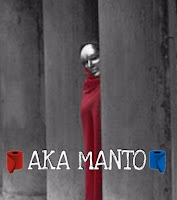This tale has scared more
than one young teen and it is touted as a story for children—but not for young
children. As an adult I find it disturbing.
It is in a subset of scary
tales involving babysitters. The backdrop of young teens alone, responsible for
younger children tends to provide a rich setting for tales that want to
terrorize.
This is why so many teen
slasher films use this premise. The following story does not need the overt
gimmicks these films use to scare their audience—it has a clown in it—enough
said.
The owners of the big house
at the end of my block finally asked me to babysit their two boys. Saturday
night, at eight I rang their doorbell. Mr. Ewers answered.
He took me on a tour of the
home. The Ewers were into art big time. I was surrounded by elaborate pieces,
including large grotesque statues that appeared around every corner.
Once back in the front hall,
I met the boys. To my relief they appeared nice and not too hyper. Mrs. Ewers
handed me a paper with the usual numbers—where to contact them and doctor
numbers.
As the couple left Mr. Ewers
turned back with a smile. “I hope you don’t get lost.” He then laughed.
The boys and I got along fine
and they even went to bed without much of a fuss. I ended up in the basement
where the Ewer’s only television was located.
This big space had been
converted into a rec room with all the boy’s toys and games. I wondered if this
was to keep them away from all the breakable art upstairs.
I dimmed the overhead lights
and found a program I liked. Sometime later I heard a knock coming from one
corner of the room. I glanced up and spotted a life-size statue of a clown sitting in this corner. I had not noticed it before. Heavens, the boys even had a statue.
I did not like the smirk on
this figure’s face so I found a blanket and covered it up. Now I could ignore
it. I happily went back to watching the smiling teens dance on my program.
A little while later, I was
interrupted by my phone ringing. It was Mr. Ewers, he was checking up on the
boys. As I reassured him everything was fine I noticed the clown figure’s big
shoes move ever so slightly.
I squealed. Mr. Ewers asked
me if everything was okay. I replied yes, but the boy’s clown statue was
putting my imagination into overdrive.
There was a pause on the line
and then Mr. Evers said, “Listen carefully, the boys have complained about a
clown that comes into their room late at night. We thought it was just
nightmares.”
“We don’t own a clown statue.
You need to get the kids and get out of the house, now! I will call the
police.”
I hung up the phone and
turned to the corner where the clown statue sat. But now the only thing that
remained was the blanket on the chair.
I then heard heavy footsteps going up the basement stairs.
I then heard heavy footsteps going up the basement stairs.





























